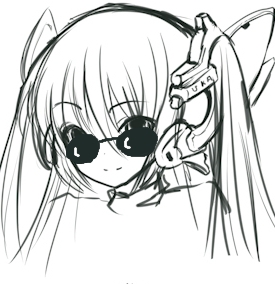
Written by A. H. on 29 Oct 2013
It's been a while since we've had a bona fide anime sensation on our hands - Death Note was arguably the last - but this year has brought us an anime adaptation which has gripped more fans, and introduced more newcomers to the medium, than anything else we'd care to remember in recent years.
The series in question is, of course, the mega-hit we all know as Attack on Titan, and at the October 2013 MCM London Comic Con we were lucky enough to get to meet and talk with three of the leading lights of the studio responsible for its terrific anime adaptation, WIT Studio.
Thus, we had the priviledge of chatting with George Wada, the studio president and producer for Attack on Titan; Ryotaro Makihara, director of the studio's recent short film outing Hal; and finally Katsuhiko Kitada, the character designer for Hal and animation director for Attack on Titan.
What did they have to say, and most importantly of all who is their favourite character in Attack on Titan? Read on to find out!
First of all, welcome to the UK... how are you finding London?
All: It's great!
A question for Mr. Wada primarily first; WIT Studio were only founded last year, so how did the decision to create the studio come about and what are the studio's goals at this point in time?
George Wada: We were working as Studio 6 within Production IG, but as a way of increasing the quality of our product we went about changing our production studio.
Our goals at the moment are firstly to make a feature-length film that is a hit not just in Japan but around the world, and also to create original TV series - something like Neon Genesis Evangelion, for example.
Now that the studio is over a year old, are there any particularly useful lessons you feel that you've learned as a studio?
Wada: For me personally I've gotten to see more of the people behind the animation - before, I tended to only see the work, but now I'm running a studio I see more of the individual creators and their lives, and that gives me more of a long-term view.
A question now for Mr. Makihara; Hal was your directorial debut, so how did your first experience in that role compare to your previous work as an animator, or indeed as an episode director?
Ryotaro Makihara: There are more decisions to be made as a director, so it's different from being an episode director because there's more responsibility, but at the same time you get to create your own world from scratch, which is very exciting.
In terms of Hal's story, what were the key ideas or thoughts that you wanted to convey within the film?
Makihara: In Japan we have a forty-nine day period of mourning when somebody passes away, and I wanted to use that to bring up the theme of our relationship with death - how death doesn't wait for anybody, and how we need to take care of the people who we love.
It's completely different in terms of the level of impact that it has compared to Attack on Titan, but in terms of the depths of the themes the film has I actually think it's quite similar. The themes of despair, of the lack of rationality behind death and similar themes - maybe it's a theme for WIT Studio?!
Mr. Kitada, one of the key factors in Hal is its relationship between an android and a human - did that idea pose any unique challenges for you when it came to designing the lead characters for the film?
Katsuhiko Kitada: The challenge was that Hal and Kurumi (the main two characters in the film) are attractive young people, but not everyone in the world is like that. What we had to experiment with was to make their designs memorable but still normal within the world in which they exist.
Makihara: It's a world without heroes and heroines, which was what we were aiming for.
Onto Attack on Titan now, and a question for all of you - was it daunting working on an adaptation of a manga that was already becoming hugely popular in its own right?
Wada: No, it wasn't scary. The director Tetsurou Araki loved the manga, and he knew that he would be able to illustrate these characters in a sympathetic way so we weren't worried about it. We knew that if we could make something as a studio that he liked, the fans would be happy with it.
Even though it was already quite well-known both inside Japan and here in the west, were you surprised by the popularity of your anime adaptation and how quickly its popularity escalated?
Wada: We were surprised! We really felt the power of having an almost simultaneous broadcast online around the world alongside Japan.
Makihara: There's a kind of internal battle within me. On the one hand I want to make something that people are going to enjoy and get dressed up in cosplay outfits for, but on the other hand I want to make something in the mould of what I said earlier - a world that doesn't have heroes and heroines, but something quieter and deeper; that's the conflict within me.

Author: A. H.
posted by Richard Durrance on 10 Dec 2024
posted by Caitlyn C. Cooper on 22 Nov 2024
posted by Caitlyn C. Cooper on 31 Oct 2024
posted by Caitlyn C. Cooper on 28 Oct 2024
posted by Ross Liversidge on 27 Oct 2024
posted by Ross Liversidge on 01 Oct 2024
posted by Ross Liversidge on 06 Sep 2024